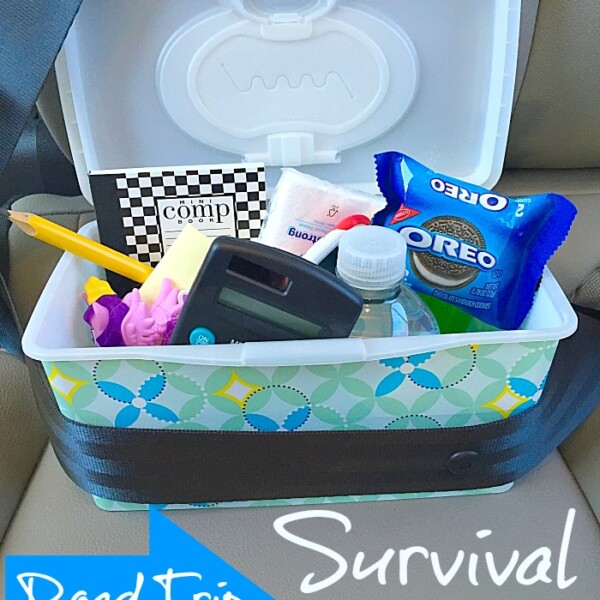Learning about Texas Beef in Amarillo. What I learned about beef, a cattle farm, and the technology used to make their feed was incredible!
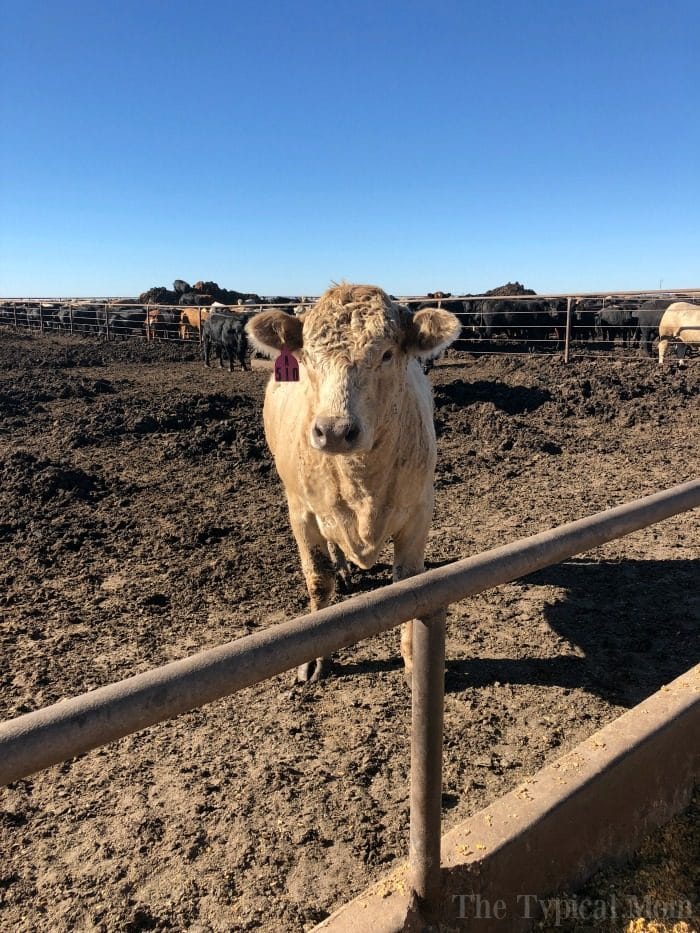
Ok so I am a California girl. When I got the opportunity to travel to Amarillo to learn all about Texas Beef I was excited! Not only do I love to travel and meet other bloggers I may have only “met” online, but I also love learning about new things. Sponsored by Elanco.
This was definitely something different and I was excited to learn all about beef!
- Normally I use my “fancy camera” when I do travel posts but for this trip I really wanted to be present.
I didn’t want to worry about carrying something bulky or interrupting with the click clicks. I’ve documented it all on my phone only. I’m glad I did. 😉

Once I got there we started our Texas beef journey off with members from Elanco and staff. Visiting a local grocery store called Market Fresh we learned all about the fresh foods they offer.
They are a part of the Albertson’s chain of stores. We have those, and saw all the cuts of beef they offer at their store.
There was a lot to choose from! I learned that not only is there a wide variety of cuts. I had seen many of them, but some were new to me. All the different grades, measures of beef to fat ratios, and what that all meant.
We learned about beef labels and what they really mean which was interesting. Here’s a quick rundown:
- Grain Finished
- Spend the majority of their lives eating grass or forage.
- Spend 4-6 months at a feed yard eating a balanced diet of grains, local feed ingredients like potato hulls or sugar beets and hay or forage.
- May or may not be given U.S. FDA approved antibiotics to treat, prevent or control disease and/or growth hormones.
- Grass-Finished vs Grass-Fed
- Spend their whole lives eating grass or forage.
- May also eat grass, forage, hay or silage at a feed yard
- May or may not be given FDA-approved antibiotics to treat, prevent or control disease and/or growth hormones.
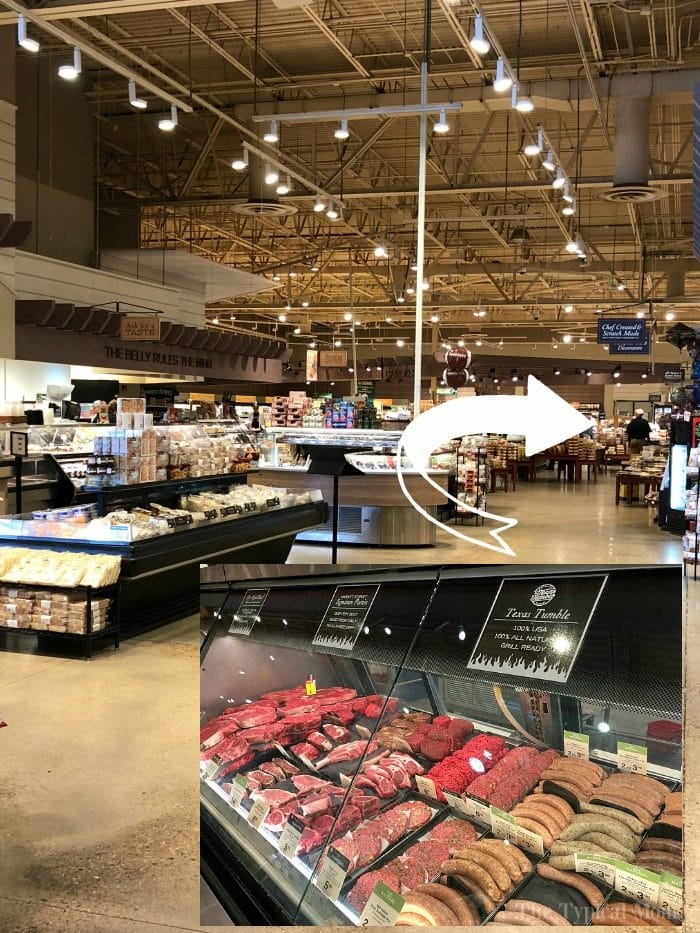
- Certified Organic
- Never receive any antibiotics or growth-promoting hormones
- May be either grain or grass finished as long as the USDA’s AMS certifies the feed is 100% organically grown
- May spend time at a feed yard
- Naturally Raised
- Never receive any antibiotics or growth promoting hormones
- May be either grain or grass finished.
- May spend time at a feed yard
For more information on labels visit this website. 😉
Yes we buy beef in bulk. Typically ground beef but occasionally a steak or two. I had no idea there were SO many different cuts of beef. They showed us around and in his opinion the best beef was 80/20.
The store was full of not only great cuts of beef but local produce as well. Some with a story behind them!! Seriously love this, I wish my local market had something like this.
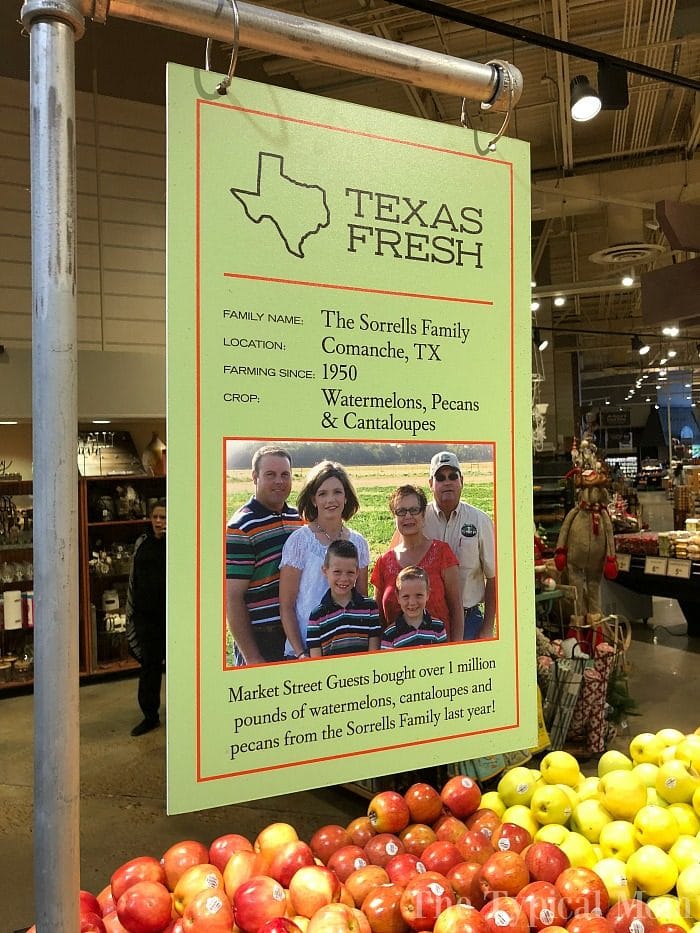
Our next stop was West Texas A&M, to their beef research center. They process 100-150 cattle each year here.
27 students are enrolled in the program currently. They learn everything from processing the animal to packaging the different cuts.

As you can see there are many different cuts. I hadn’t heard of before. Orders are taken and cut according to the customer’s desires.
In another room they had a large refrigerator where meat like this was stored in vacuum sealed packages. They could be purchased by students or staff members….as fresh as it comes for sure.
We were shown where each piece of Texas beef was cut, and what each piece was typically used for.
- Like short ribs are my favorite and don’t need explanation but which piece is typically used for fajita meat. Or where you’d find a ribeye steak….that sort of thing. Totally new to me!
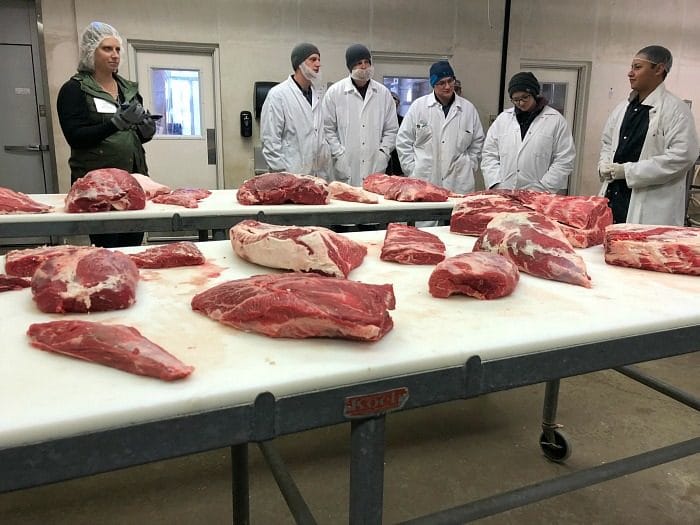
Visiting the cattle farm was next and there was a lot to learn there. Like I said, I’m a California girl. Like from the city and the largest animal I ever owned was a dog.
I am pretty unfamiliar with any type of farm. This one of course had cows….lots of them! What I didn’t expect though was to find a massive plant that produced thousands and thousands pounds of feed for them.
This is just part of the entire operation that took in the ingredients, processed them, combined them in a systematic way making sure each batch was almost identical. Then having it ready to feed to the cattle.
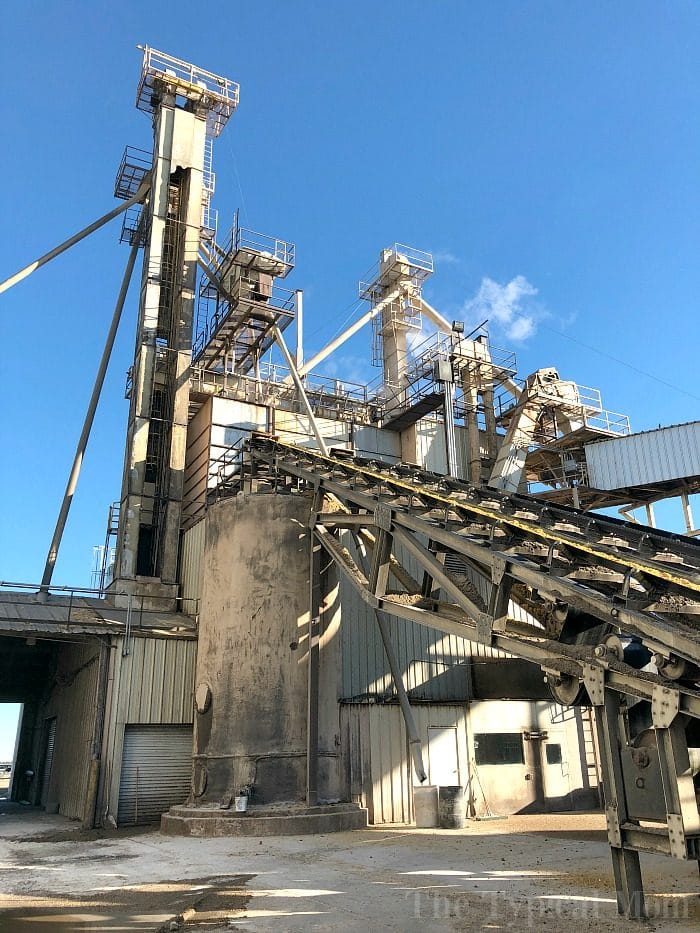
Remember I said precise. Well here is a look at what I mean. This computer measures everything, and makes sure each batch has the same amount of corn.
The corn kernels are “mashed” to just the right thickness, not too thick and not too thin. That the silage is processed properly, and if it’s off the staff there are alerted.
- A lot of feed needs to get produced here every day to keep up with the amount of cattle they have here. It needs to be feeding them at almost the exact same time each day is very important for their health.
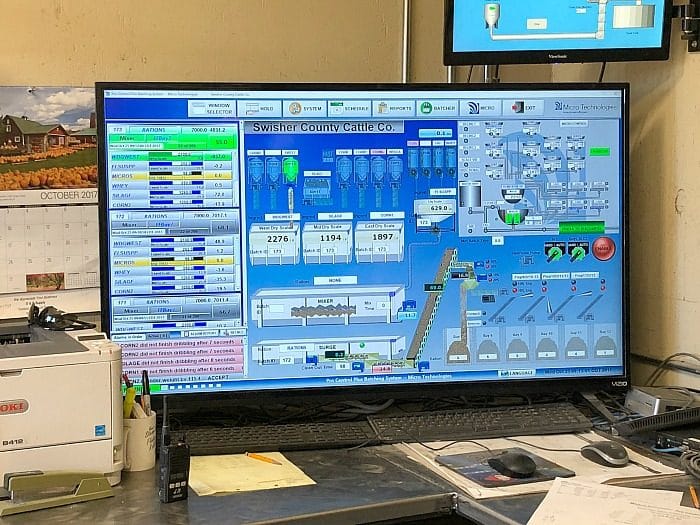
Here’s the corn I was talking about that is “smushed” to just the right thickness for the cow to digest it properly.
I didn’t know what silage was but it is the remnants of the corn plant that is left over after the kernels are removed. Therefore using the entire plant….smart!
- This outside is hydrated, then stored and covered so it can ferment which is good for the cows digestion. It is a fiber of sorts which we all need!
Taking care of the cows is of utmost priority here at the cattle farm and the feed is a huge part of keeping them well and happy too.
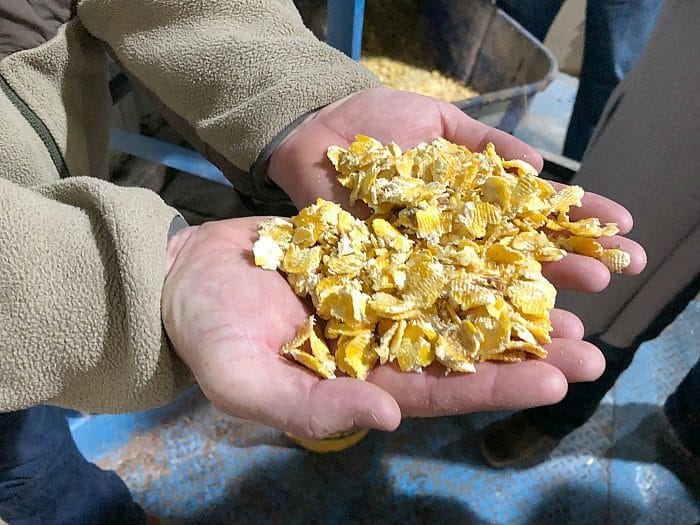
Here’s the finished feed. All combined and ready for consumption. 😉 A fun part when we were on the cattle farm was watching the cowboys herd the cows.
They[d check each one to make sure they were all healthy. One way they do this each day is to make sure each cow gets up and stands tall.
Just like us it is easier to tell whether an animal is not feeling well if they are not laying down. If they seem to be under the weather they are taken in to get checked out by a vet who specializes in cattle.
- We all get sick from time to time and cattle are no different. If one is ill it is given the proper antibiotics made specifically for them and looked after until they are in tip top shape again.
- Each one has an identification tag and their treatment is logged into a computer and everything is kept track of there.
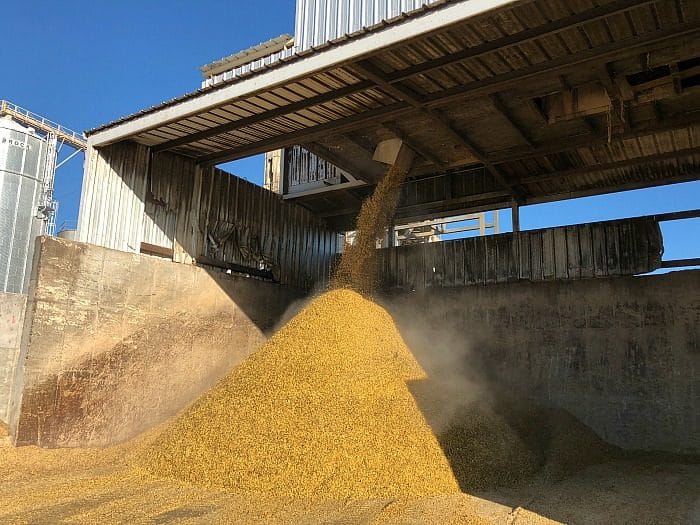
They are closely monitored and go thru a waiting period of 100 days after treatment at the farm before being processed.
Beef is constantly being tested and they have very strict requirements they need to meet before being cut and packaged.
It was a really interesting experience learning about Texas Beef with Elanco. From the vets, to the staff at the cattle farm, to the students and professors at West Texas A&M.
They really take their job seriously and take pride in how they take care of their animals. Until next time Texas! 😉



